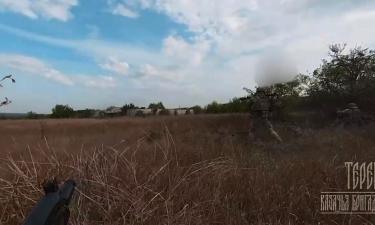1,800 dead in Philippines
Rescue workers held little hope of finding more survivors from a landslide that killed an estimated 1,800 people, saying this village in the eastern Philippines was swallowed whole by a wall of mud and boulders.

Friday's landslide left Guinsaugon -- a community of 375 homes and an elementary school -- looking like a giant patch of newly plowed land. "There are no signs of life, no rooftops, no nothing," province Gov. Rosette Lerias said.
A teacher, who was buried with his pupils, called his sister by cell phone to report that as many as 70 children were alive, radio station DZMM reported. About 250 students and teachers were believed to have been in the school.
A national disaster official, Anthony Golez, said the teacher sent a text message at 4 a.m. today saying there were four people alive. After that, his cell phone was dead. Authorities said efforts to reach the school were hampered by mud that in some areas was like quicksand, reports IndyStar.
The Philippines is hit by about 20 typhoons each year, with residents and environmental groups often blaming illegal logging or mining for making natural disasters worse.
A series of storms in late 2004 left about 1,800 people dead or presumed dead northeast of Manila. On Leyte island in 1991, more than 5,000 died in floods triggered by a typhoon.
President Gloria Macapagal Arroyo gathered all state agencies involved in disaster operations and said her priorities were to rescue the living, recover the dead and rebuild the community.
"I call on each Filipino to pray for the victims and the survivors," Arroyo said in a statement. "It breaks my heart to think of those precious schoolchildren whose innocence and hope have been so tragically snuffed out."
C-130 transport planes carried supplies to Tacloban's airport, leaving military trucks to make at least a six-hour trip to Guinsaugon with medicine, rice and clothes from UNICEF and USAID.
The United Nations said it was sending a team to help determine emergency needs and was making an immediate grant of $50,000 (28,700 pounds) as part of the international response.
The International Federation of the Red Cross said it feared the death toll would be high. It was sending trauma kits, other relief goods and about $150,000 in initial aid.
The United States sent two naval vessels with 17 helicopters and nearly 1,000 soldiers, already in the Philippines for annual military exercises, to the coastal area.
Australia offered A$1 million (425,000 pounds) to help evacuate survivors, set up shelters and provide emergency items, informs Reuters.
O.Ch.
Subscribe to Pravda.Ru Telegram channel, Facebook, RSS!




